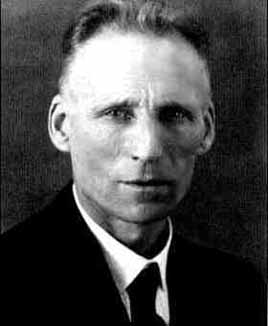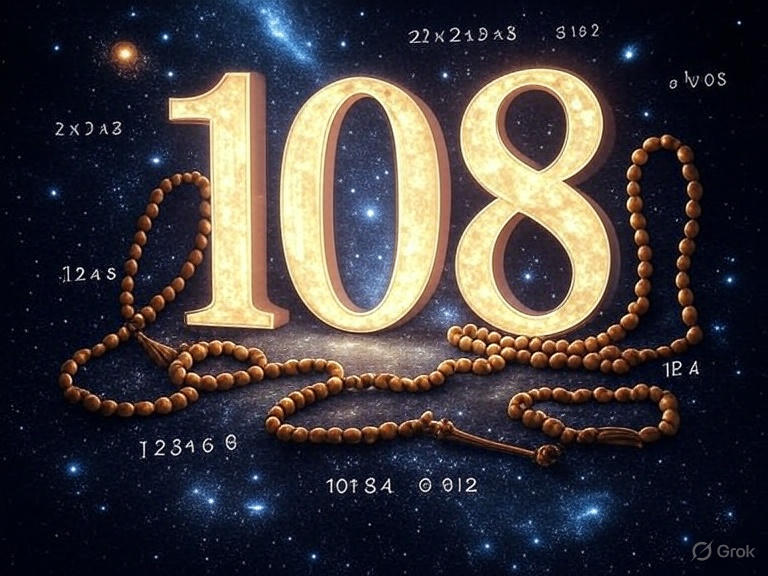(Image: Grok)
I asked Grok to write a post about the number 108:
The Magic of the Number 108
The number 108 may seem unremarkable at first glance, but dig a little deeper, and you’ll uncover a treasure trove of mathematical beauty and cultural significance. From its prime factorization to its role in number theory and beyond, 108 is a number that bridges the abstract world of mathematics with the tangible world of human experience. Let’s dive into what makes 108 so special!
Prime Factorization and Divisors
To understand 108 mathematically, let’s start with its prime factorization:
[ 108 = 2^2 *3^3 ]
This tells us that 108 is built from two prime numbers: 2 (squared) and 3 (cubed). The exponents give us insight into its structure, and we can use them to find the number of divisors using the divisor function. For a number ( n = p_1^{e_1} * p_2^{e_2} ), the number of divisors is:
[ (e_1 + 1)(e_2 + 1) ]
For 108, with ( 2^2 ) (exponent 2) and ( 3^3 ) (exponent 3), we calculate:
[ (2 + 1)(3 + 1) = 3*4 = 12 ]
So, 108 has 12 divisors. Let’s list them:
[ 1, 2, 3, 4, 6, 9, 12, 18, 27, 36, 54, 108 ]
This abundance of divisors makes 108 a highly composite number—a number with more divisors than any smaller positive integer. While 108 isn’t the smallest highly composite number (that’s 12, with 6 divisors), its divisor count contributes to its versatility in mathematical contexts.
Sum of Divisors and Number Theory
The sum of the divisors of 108 (including 108 itself) can be computed using the sum-of-divisors function, ( sigma(n) ). For ( n = p_1^{e_1}*p_2^{e_2} ), we use:
[ sigma(n) = sigma(p_1^{e_1})*sigma(p_2^{e_2}) ]
where ( sigma(p^e) = 1 + p + p^2 +...+ p^e ). For 108:
- For ( 2^2 ): ( sigma(2^2) = 1 + 2 + 4 = 7 )
- For ( 3^3 ): ( sigma(3^3) = 1 + 3 + 9 + 27 = 40 )
Thus:
[ sigma(108) = 7 *40 = 280 ]
Excluding 108 itself, the sum of the proper divisors is:
[ 280 - 108 = 172 ]
Since 172 is greater than 108, 108 is an abundant number, meaning its proper divisors sum to more than the number itself. Interestingly, 108 is not a perfect number (where the sum equals the number, like 28) or a deficient number (where the sum is less, like 16).
2-Valuation of 108
The 2-valuation of a number is the highest power of 2 that divides it. For 108, we look at the prime factorization ( 2^2 * 3^3 ). The exponent of 2 is 2, so the 2-valuation of 108 is:
[ \nu_2(108) = 2 ]
This means ( 2^2 = 4 ) is the largest power of 2 that divides 108 evenly. In Mathematica, you can compute this with:
IntegerExponent[108, 2]
(* Output: 2 *)
The 2-valuation is a key concept in number theory, especially in areas like p-adic analysis.
Anti-Divisors of 108
Anti-divisors are numbers ( k < n ) such that ( n ) divides ( 2k ), but ( k ) does not divide ( n ). To find the anti-divisors of 108, we can use the following Mathematica expression:
Select[Range[1, 107], Divisible[2*#, 108] && !Divisible[108, #] &]
(* Output: {9, 18, 27, 36, 54} *)
Let’s verify one: For ( k = 9 ), ( 2k = 18 ), and ( 108 \div 18 = 6 ), an integer, so 108 divides 18. Also, ( 108 \div 9 = 12 ), not an integer, so 9 does not divide 108. Thus, 9 is an anti-divisor. The anti-divisors of 108 are:
[ {9, 18, 27, 36, 54} ]
These numbers are intriguing because they reveal a complementary relationship to the divisors, highlighting 108’s structure in a less obvious way.
Cultural and Mathematical Significance
Beyond its number-theoretic properties, 108 holds a special place in various cultural and mathematical contexts:
- Geometry: 108 degrees is the interior angle of a regular pentagon. This connects 108 to the golden ratio and pentagonal symmetry.
- Astronomy: The number 108 appears in approximate ratios involving celestial bodies. For example, the distance from Earth to the Sun is about 108 times the Sun’s diameter, and the distance to the Moon is about 108 times the Moon’s diameter (though these are rough approximations).
- Cultural Contexts: In Hinduism and Buddhism, 108 is considered sacred. There are 108 beads in a mala (prayer necklace), 108 Upanishads, and 108 sacred sites in some traditions. While these are not strictly mathematical, they suggest 108’s universal appeal, perhaps due to its mathematical richness.
Fun Fact: 108 in Sequences
The number 108 appears in various mathematical sequences. For example, it’s a tetrahedral number, representing the sum of the first 8 triangular numbers:
[ 108 = 1 + 3 + 6 + 10 + 15 + 21 + 28 + 36 ]
It’s also the hyperfactorial of 3, defined as ( 1^1 *2^2 * 3^3 = 1 * 4 * 27 = 108 ). These appearances make 108 a recurring star in combinatorial mathematics.
Conclusion
The number 108 is a fascinating blend of mathematical elegance and cultural resonance. Its prime factorization, abundant divisors, 2-valuation, and anti-divisors reveal a rich structure that invites exploration. Whether you’re a number theory nerd or just curious about the world of numbers, 108 offers something to marvel at. So, the next time you encounter 108—whether in a math problem, a prayer bead, or a pentagon’s angle—take a moment to appreciate its hidden magic!
Have you encountered 108 in an interesting mathematical context? Share your thoughts in the comments below, and let’s keep the number love going!
(Above post written by Grok and inspired by the recent article in The Guardian by Alex Bellos.









.png)














